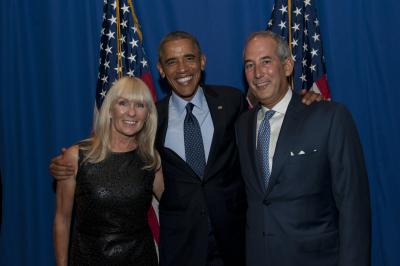The 97-page Innovation report is a surprisingly self-critical assessment on where the Grey Lady stands in the transition from analog to digital challenging all media. It is the product of six months of largely internal reporting by a hand-chosen committee of Times journalists led by A.G. Sulzberger the Publisher’s son and next in line to the throne. Based on the honesty and clarity of the analysis the paper’s future is in good hands. The report does not stint on uncomfortable facts; across nearly ever measure reader engagement with the New York Times is down over the last two years. Readership across platforms: down; overall page views: down; home page visits: down; time spent on sites: down; iPhone active users: down. The report sees this last measure as particularly troubling given that the whole industry has been suffering from falling print readership while regarding mobile usage as the great counterbalancing hope.
I am more taken with the very steep decline in the number of unique visitors who find their way to Times’ content by navigating first to the homepage – from over 150 million to fewer than 60 million over the past two years. Undoubtedly more of us are reaching this content via third party links and social media. However for an institution long obsessed with the question of what appears on the front page of the analog newspaper this is heresy. The report draws the obvious conclusion that The Times needs to get better at engaging and tweeting with its large online community but notes that other publications such as Huffington Post and BuzzFeed are way ahead.
To me the example of the fixation with page one of the traditional newspaper and its less successful sibling the online homepage points to a deeper cultural and strategic issue at The Times: It is a product built for its producers more than for its consumers. For over a century the most tangible sign of advancement for a journalist has been to have her article chosen to appear on page one of the paper. It is a litmus test of relevancy and quality. While online parallels exits (most tweeted story most emailed story most viewed story) it is harder to boast to your friends and family that your “listicle” or slide show of dumbest-ever CEO bloopers was the most re-tweeted item on Business Insider. This will change over time and already has across generations.
A more obvious sign that The Times is written and edited by and for journalists is the length of the articles. I am always surprised when I read a given story in both The New York Times and the Financial Times and the latter is one-third shorter without compromising on quality or “must know” content. In the paper editions this is merely an inconvenience highlighted by the very user-unfriendly: “Continued on Page A14” in the Times versus stories that generally begin and end on the same page in the FT. However on line especially on mobile devices with limited screen real estate article length is a complete turn-off – literally. It thus often seems to me that the question posed by Times’ editors to their journalists must be: “Do you have any more material on this subject that might appeal to some reader?” Rather than “What do you think the average reader needs to and wants to know about this subject?”
This reminds me of an anecdote told to me by the late Colin Marshall made Lord Marshall of Knightsbridge for the great turn-around of British Airways he accomplished with Lord King. I had gone to see Lord Marshall early in my time at Reuters to learn how he had helped engineer a dramatic improvement in the service culture of the airline from its dismal BOAC days to “BA – The World’s Favorite Airline.” Colin was very generous with his time and took me through the many elements of the cultural change program he undertook at BA. One of the changes he described which was relevant to Reuters and I believe The New York Times was a change in the scheduling of flights. Lord Marshall explained that in the BOAC days flight schedules were often set at times which were convenient for the pilots to fly the planes – not necessarily times at which the most passengers would find convenient or aligned to their business schedules.
The Times Innovation report recognizes that the publication needs to promote stories better in social media tag important topics to facilitate search and navigation “better understand our users” and even “collaborate with business-side units” but I was surprised that this otherwise brave report did not directly address the issue of story length and target customer: For whom is the product being created – the journalist who has a full reporter’s notebook or the time-starved reader? There is much discussion of “reader experience” and the importance of design. There is even a laudable commitment to becoming digital as opposed to paper first; however I do not detect the courage to change the product itself. This is an understandable conservatism when the traditional product has been so good and when issues of “church and state” are raised. Unfortunately it is also a major obstacle on the road from analog to digital. As a reader I hope the Times will have the courage to make it to the other side.





